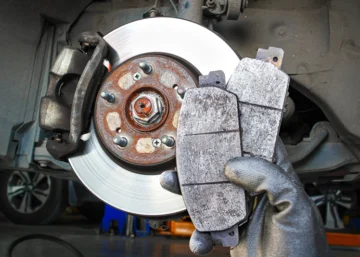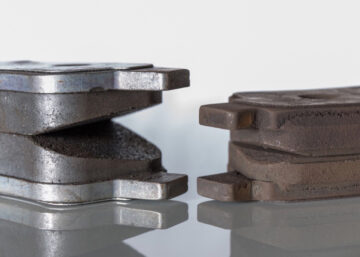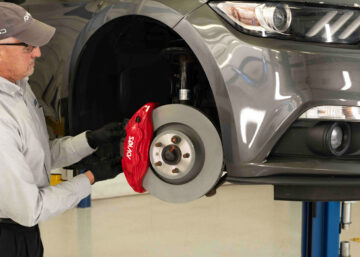
Brake fade presents itself in ways that feel similar to that of a worn-out brake pad. However, it does not mean brake replacement is needed. With brake fade, stopping power will return, although not always to the same extent once the problem has been addressed. As a tech, your expertise is crucial in identifying whether your customer’s brake pads are worn-out or if their vehicle is showing signs of brake fade.
What is Brake Fade?
Simply put, brake fade is defined as a decrease in braking performance that comes about unexpectedly. Although brake fade has several causes, the symptoms always feel the same. Let’s dive into the differences between brake pad fade, brake fluid fade and green fade.
Causes of Brake Fade
Pad Fade
Pad fade is the most common cause of brake fade. It happens when the brake pads overheat from friction during braking events and the heat is unable to dissipate before the brakes are used again.
This can happen when braking system operates above the maximum temperature range specified for that particular brake pad. For reference, brake pad temperatures typically stay below 400 degrees Fahrenheit, but can reach highs of more than 700 degrees Fahrenheit.
When temperatures rise above the maximum limit, a gas is formed from the resins within the brake pad, creating a barrier between the pad and disc, ultimately reducing braking power.
Fluid Fade
Fluid fade happens when brake fluid boils from heavy or extended braking causing moisture in the fluid to turn into a vapor. The brake pedal will then go straight to the floor since the vapor is more easily compressed than liquid. This results in reduced, or nonexistent braking capabilities.
Furthermore, brake fluid absorbs water over time, and as the amount of moisture increases, the brake fluid’s boiling point is reduced. This increases the chances of fluid fade.
To resolve fluid fade issues, you’ll need to bleed the brake fluid from the brake calipers until the fluid runs clear. Whether you need to top off the master cylinder or are filling the system after a brake fluid flush, be sure to use an ultra-premium brake fluid with higher wet and dry boiling points to prevent early fluid fade from moisture absorption.
Green Fade
Green fade, also known as “early life brake fade”, occurs the first few times new brake pads reach high temperatures and emit gasses. This can be avoided altogether by bringing the brake pads to high temperatures purposefully within a controlled environment. This practice is known as “bedding” the pads.
Prevention
Techs can help to prevent brake fade through these actions:
After brake pad installation, you can bed-in your customer’s new hardware by following the 30-30-30 rule, which means 30 stops from 30 miles per hour and 30 seconds of cool down time in between each stop.
You can also provide your customer with the following tips:
- Avoid heavy braking whenever possible
- Follow the replacement specifications identified on your brake fluid bottle
- Prevent overheating by avoiding prolonged braking
- Be aware of upcoming traffic so that you can take your foot off the gas pedal ahead of time, minimizing your need for brake usage
For more tech tips to refresh your memory, visit our technical library here.






